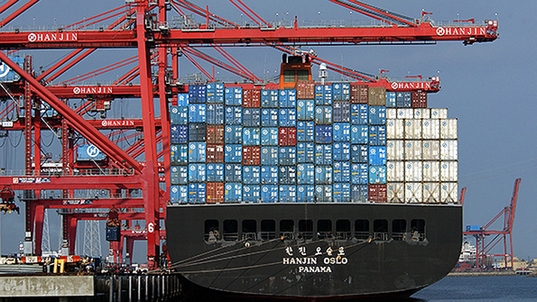There Aren’t Enough Containers to Keep World Trade Flowing

The availability of cargo containers at Hamburg, Rotterdam and Antwerp in Europe and Long Beach and Los Angeles in the U.S. are at the lowest levels recorded.
Bloomberg
MAR 19, 2020
